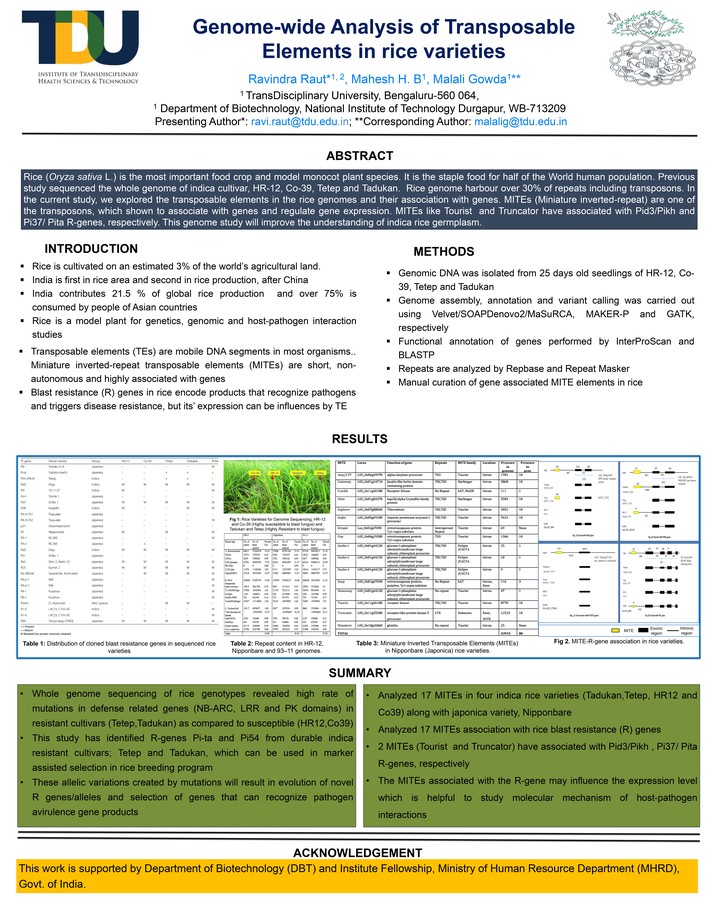Genome wide a analysis of Transposable elements in Oryza sativa
 NSFG-2017
NSFG-2017abstract:
Rice (Oryza sativa L.) is the most important food crop and model monocot plant species. It is the staple food for half of the world human population. We here report the whole genome sequencing and annotation of indica cultivar, HR-12. We have generated over 70x of Illumina data (2x100 nts) and 20x of PacBio data. Use long reads has significantly improved the quality of HR-12 assembly by increasing four times N50 of contigs and reduced 40% of scaffolds. This approach has assembled over 90% (389 Mb) of estimated indica rice genome. We identified 2130 unique genes to HR-12 genome by comparing with 93-11 and Nipponbare. Transposable elements (TEs) are jumping genes and are ubiquitous in all organisms. Although numerous TEs have been reported in rice, no comprehensive investigation has been carried out on a genome-wide scale. . Because of their sequence diversity and small size, MITEs may be a valuable evolutionary tool for altering patterns of gene expression. MITEs play important roles in gene expression, either upregulating or downregulating gene expression. This genome study will improve the understanding of Indica rice germplasm and help to understand the host-pathogen interaction.
Keywords
Transposable elements, Oryza sativa, MITEsSupervisors
Prof. Malali Gowda, Centre for Functional Genomics & Bioinformatics, TDU Bengaluru, and Dr. Subhankar Roy Barman, NIT DurgapurIssued by
National Symposium and Workshop on Future of functional genomic (NSFG-2017), Centre for Functional Genomics & Bioinformatics, TDU Bengaluru.